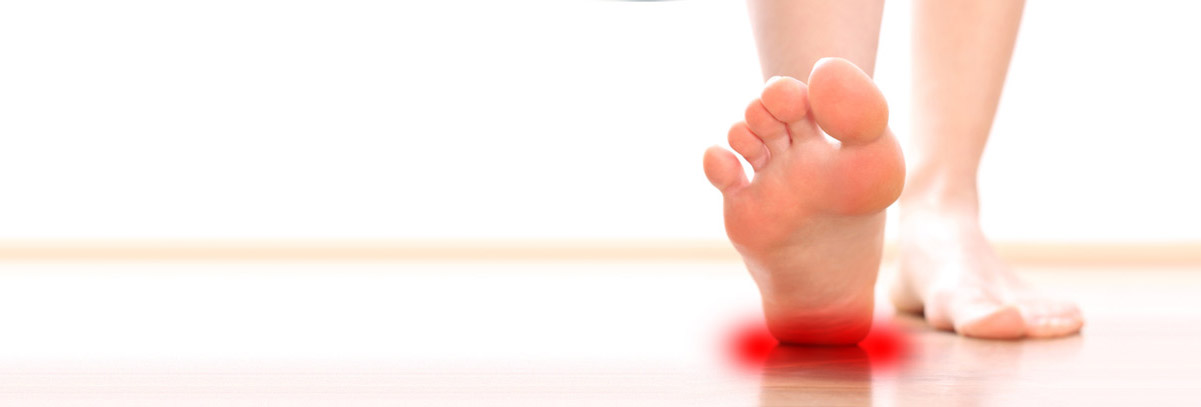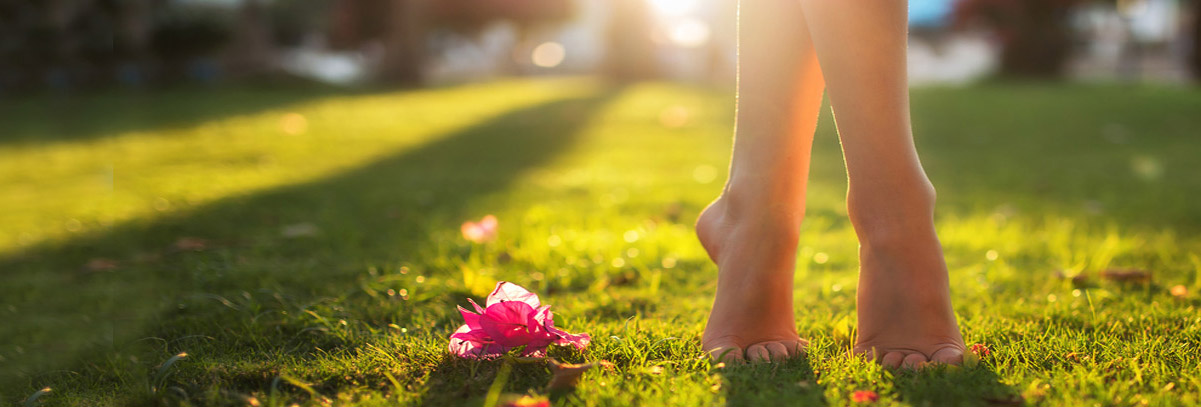Elderly and their Feet

As you age, it’s important to pay good attention to your overall health; this includes the well being of your feet. The feet are considered the foundation of the body; if their hygiene becomes at risk, it’s possible you can find yourself immobile and in pain. To avoid this, it’s recommended that senior citizens, in particular, take early action in maintaining the health of their feet.
Some of the most common foot conditions found among geriatric patients include heel pain, ingrown toenails, corns, calluses, bunions, dry skin, brittle nails, complications due to arthritis and diabetes, and fungal infections. In order to avoid these issues from arising, it’s recommended that you use a foot stool when seated to keep the feet elevated, dry your feet completely after washing, ensure your shoes and socks fit well and leave room for your toes, trim your toenails straight across on a regular basis, and that you keep your feet moisturized to avoid cracking of the skin.
It may also be helpful to look into footwear that provides your feet with extra support to avoid fallen arches and ingrown toenails, as well as to help you keep your balance while going about your daily activities. In more severe cases, depending on the foot condition you’re experiencing, some podiatrists may suggest custom orthotics or shoe inserts to help correct the alignment of your feet.
If you’re experiencing foot pain of any kind or would like more information on how to maintain healthy feet as you age, we recommend you speak with a podiatrist who can offer you professional advice and guidance.
Fungus Toenails

The area of the toes is generally warm and damp, unfortunately making it a great area for fungus to grow. If left untreated, the fungal infection can spread, which is why it’s so important to get professional help early on and look into your treatment options.
Fungal infections occur due to fungus getting through the cracks of the toes or cuts in your skin. Common signs that you may have a fungal infection include thicker than normal toenails, oddly shaped toenails, discoloration, a yellowish hue to the nail, and separation of the nail and nail bed. Fungal infections can affect anyone but are most common among men, those with diabetes or athlete’s foot, and smokers. The risk of having toenail fungus also increases as you age, if another family member has it, and if you have a weaker immune system.
To avoid getting a fungal infection, it’s important that you wash your feet daily with soap and water, making sure to get in between your toes, and dry the feet well. When cutting your toenails, make sure the clippers you’re using are clean and that you’re cutting straight across. It’s also important that you wear shoes in areas where fungus can thrive, such as wet public places like swimming pools or locker rooms.
If you believe you’re experiencing a fungal toenail infection, we recommend that you speak with a podiatrist as soon as possible for a proper diagnosis and suggested plan for treatment.
Flat Feet

Flat feet is a condition that affects those who have little to no arch in their feet. When you stand, a person who doesn’t have flat feet will have a gap from the inner part of their feet to the floor, due to the normal arch that slightly rises off the ground. Those with flat feet will experience no such gap. While there are some people who experience no issues with their flat feet, it’s not uncommon for those with this condition to experience discomfort or pain.
Flat feet may cause a certain level of pain due to strained muscles and connecting ligaments. Those not afflicted by flat feet are able to get support while walking by the spring that the arch provides, which in turn, helps to distribute your body weight while taking steps. When the arch is no longer present, there is a larger amount of pressure on your muscles and ligaments in the feet, which is why they become strained and may cause you to feel pain.
There are many reasons that play a role in why a person may develop flat feet. For instance, certain genetic factors passed down from parents can lead to flat feet. Children may appear to have flat feet; however, their arches should develop over time. Having overall weak arches, a foot or ankle injury, arthritis, or a muscle or nervous system disease may all increase your likelihood of having flat feet. Tarsal coalition, a foot condition causing the fusion of bones in the feet, may also play a part in developing flat feet. Other common factors that are linked to flat feet include diabetes and obesity.
To manage the discomfort that may come with flat feet, we recommend that your practice exercises to help ease your pain. Heel cord stretches are a great way to stretch your Achilles tendon and help loosen up calf muscles that are often strained due to flat feet. Placing a golf ball under your foot and rolling it back and forth while seated is another great stretch, especially for your plantar fascia ligament.
When it comes to treating flat feet or fallen arches, it’s suggested you get plenty of rest. Frequently ice the affected area to help reduce swelling. Performing daily stretches are a great way to loosen up your muscles and relieve strain. It may also be beneficial to look into orthotics or shoe inserts to help relieve the pain.
If you’d like more information on how to treat discomfort you’re feeling because of flat feet, consult with a podiatrist for the best treatment options for your case.
Foot Pain

The feet serve as the foundation of the body. When pain is experienced, it’s therefore extremely important to identify early on what and where the issue is. The causes of foot pain vary greatly, including but not limited to diseases, deformities, improper footwear, and injuries pertaining to the foot region.
Those who experience foot pain may also notice redness, swelling, soreness, bruising, or numbness present at the injured area. When these symptoms occur, it’s important to also identify where the pain experienced is located, as there are a number of foot complications that could be at the root of the problem. For example, different foot conditions can affect different areas such as the heel, ball of the foot, foot arch, the toes, or ankles, to name a few.
Common heel pain conditions include heel spurs and heel fractures. Morton’s neuroma is a condition that often comes with pain experienced at the ball of the foot, as well as sesamoiditis. Those suffering from discomfort in their arches may have flat feet or plantar fasciitis. Common issues that affect the toes include gout, bunions, blisters, corns and calluses, as well as hammertoe and ingrown toenail. An ankle sprains is also a common ailment that can lead to foot pain.
Treatment for foot pain varies for each case, depending on both the cause of pain and the location of the affected area. The most common recommendations for easing the discomfort of foot pain include the following: getting plenty of rest, icing and heating the area in which pain is felt, pain relievers, and keeping the foot elevated to avoid swelling.
If you’re experiencing foot pain, we recommend that you meet with a podiatrist as soon as possible for a proper diagnosis and suggested treatment plan.























